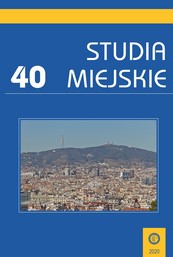THE SPATIAL DISTRIBUTION OF THE MEDIUM-SIZED ENTERPRISE SECTOR IN THE HUNGARIAN URBAN HIERARCHY
THE SPATIAL DISTRIBUTION OF THE MEDIUM-SIZED ENTERPRISE SECTOR IN THE HUNGARIAN URBAN HIERARCHY
Author(s): Réka HoreczkiSubject(s): Business Economy / Management, Rural and urban sociology
Published by: Uniwersytet Opolski
Keywords: urbanization; medium-sized enterprise; Hungary; Transdanubia;
Summary/Abstract: The present study investigates the spatial distribution of the medium-sized enterprise sector in the Hungarian urban network. This tier of the enterprise network has been relatively neglected in comparison with large foreign-owned firms, but deserves a look due to its promising role in the regional development and development policy. Our previous research1 on medium-sized enterprises becomes particularly relevant when we consider that the dominant development model of post-socialist industry, based on the attraction of Foreign Direct Investment, is showing limits under the new economic crisis; and that the further increase in regional competitiveness necessitates stronger support for the development of domestic enterprises in both developed and underdeveloped regions. However, the development dilemmas of mid-sized enterprises have not been sufficiently considered in the previous decades, even though their position between larger (mostly foreign-owned) companies and small, capital-poor enterprises gives them significant development potential. Their contribution to domestic capital accumulation, ability to formulate independent competitive strategies, and the role in shaping the local or regional business environment deserves scrutiny. According to our preliminary assumption, the status of medium-sized enterprises in the urban hierarchy is shaped first and foremost by the population number of cities, since the proximity of human resources and markets is a significant locational factor for medium-sized manufacturing firms. The study gives an overview of the evolution of the number of medium-sized enterprises and the average number of their employees in Hungarian cities since 2000, based on data published by the Hungarian Academy of Sciences CERS Databank and the Central Statistical Office. Structured interviews were conducted to detect the disparities at the level of urban regions, with a particular emphasis on Baranya County and the City of Pécs.
Journal: Studia Miejskie
- Issue Year: 2020
- Issue No: 40
- Page Range: 71-81
- Page Count: 11
- Language: English

